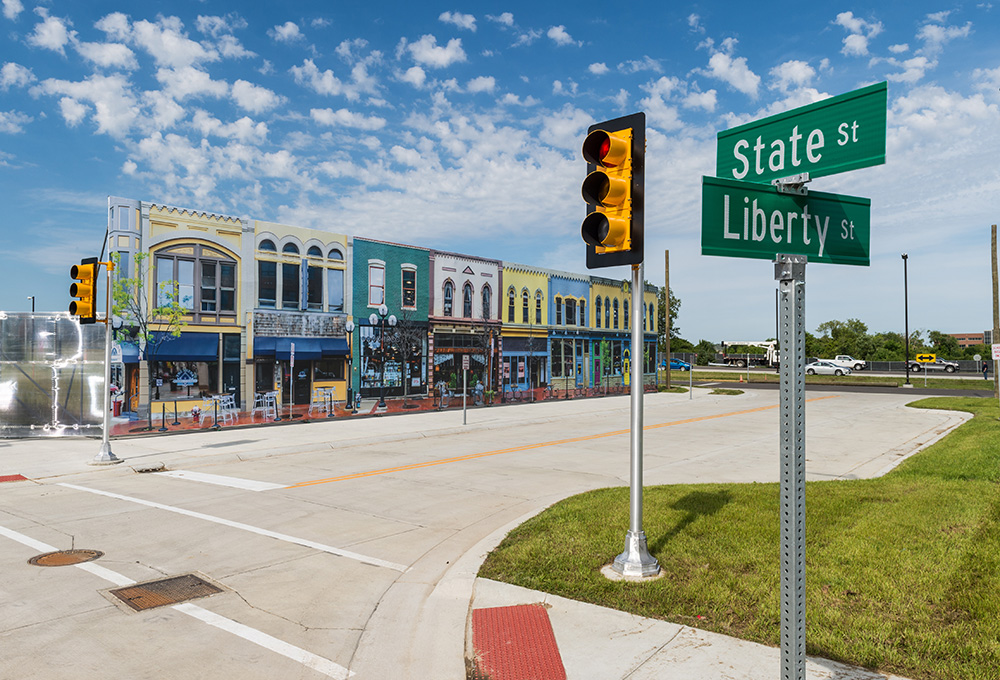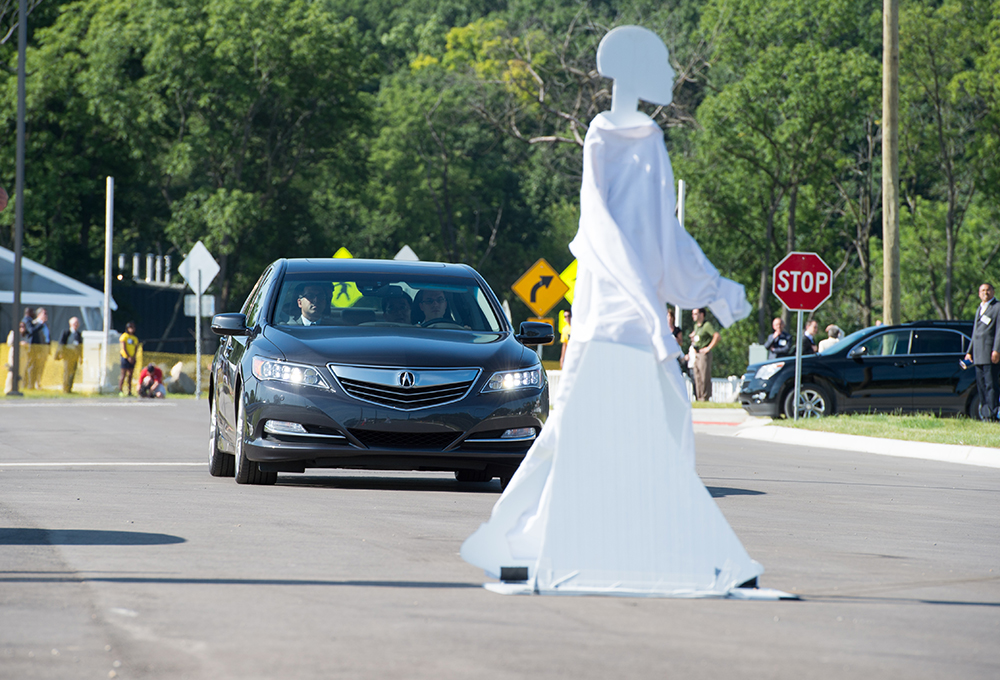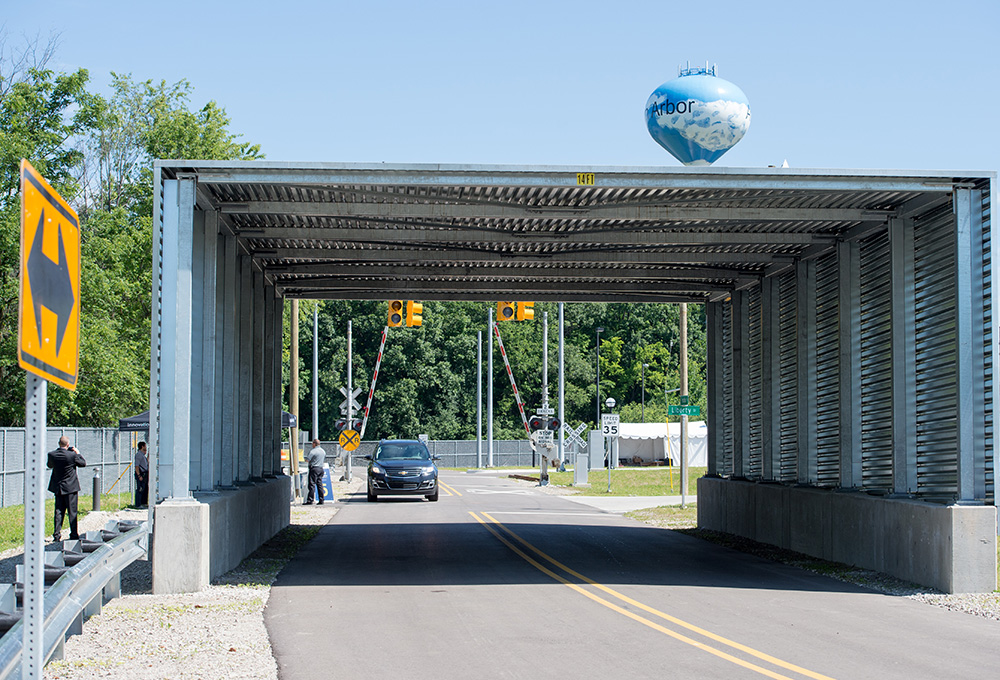The Town that Drives Itself
Ghost towns have a few hallmark features — lots of buildings, lots of roads, and no residents. These uninhabited towns were once bustling with commerce and community, but for reasons which often differ from place to place, they’re now desolate and abandoned.
Mcity — yes, that’s the name of the place we’re about to explore — has lots of buildings, lots of roads, and no residents. But it’s hardly a ghost town because it’s not abandoned; it can’t be because no one ever lived there. Here’s a picture of the town — the corner of State and Liberty.

That’s hardly a ghost town. It’s bright, clean, and airy. And — importantly — the stoplights are working.
Really, that’s the most important part. Mcity wasn’t built for people. It was built for cars — autonomous ones.
The story starts in 2007, when pharmaceutical giant Pfizer moved out of its research facilities near the University of Michigan’s main Ann Arbor campus. A year or so later, the university acquired the land intending to use it for various research purposes. That put the college — which is less than an hour’s drive from Detroit — in a great place as self-driving cars became increasingly promising. Michgan used some of the land to build Mcity, for the price of $10 million. The idea was hardly a controversial one; Michigan had no problem raising the money. The state department of transportation invested $3 million in the project and an all-star roster of technology, automotive, and insurance companies — Gizmodo highlights “Nissan, Toyota, Ford, GM, Honda, State Farm, Verizon, and Xerox” — pitched in $1 million each. It’s been a unique partnership ever since.
Mcity opened its doors — er, roads — in 2015. It is a 32-acre urban landscape with all sorts of roadways. There are railroad crossings, roundabouts, differently-paved streets, highway on-ramps, crazy intersections with confusing left turns, and more. The buildings, as you can probably tell by the above, are just facades, and there are no people beyond the researchers; instead, there are fake pedestrians that don’t know how to safely cross the street. (The image below is an example.) The purpose of the city is to test driverless cars and the technology which controls them, with researchers across disciplines and employers taking advantage of this one-of-a-kind city.

Beyond the pseudo-pedestrians, Mcity has a few other unique features, most notably the odd-looking tunnel below. Because autonomous vehicles often rely on outside information — for example from GPS satellites — the Mcity researchers wanted a way to block that information from reaching the cars. So they built a highway underpass which blocks out both satellite and wireless signals.

And there’s hope for real innovation. Even though Mcity is only about two years old, it has already yielded one practical vehicle: transport for the university’s engineering students. In July, per the New York Times, the school announced that “soon, students and staff members at the University of Michigan will be able to get around the engineering campus on fully automated, driverless shuttle buses.”
Bonus fact:The past has been predicting driverless cars for a long time, but in one case, the timing about when that innovation will become reality has been creepily accurate. In 1953, famed sci-fi writer Isaac Asimov wrote a short story titled “Sally” (available here) about a futuristic society (it takes place in the year 2057) in which only automated vehicles are allowed on the road, and about the lives of these intelligent cars after they’re decommissioned. Sally is one of those cars — a convertible — which lives on a farm with fifty other cars which have fallen into disuse. The oldest car, Mat-o-Mot, was built in 2015 — the same year Mcity opened (coincidentally, of course).
From the Archives: No Parking: How Singapore deals with parking demands.
Related: A self-driving toy train — it follows the line.
